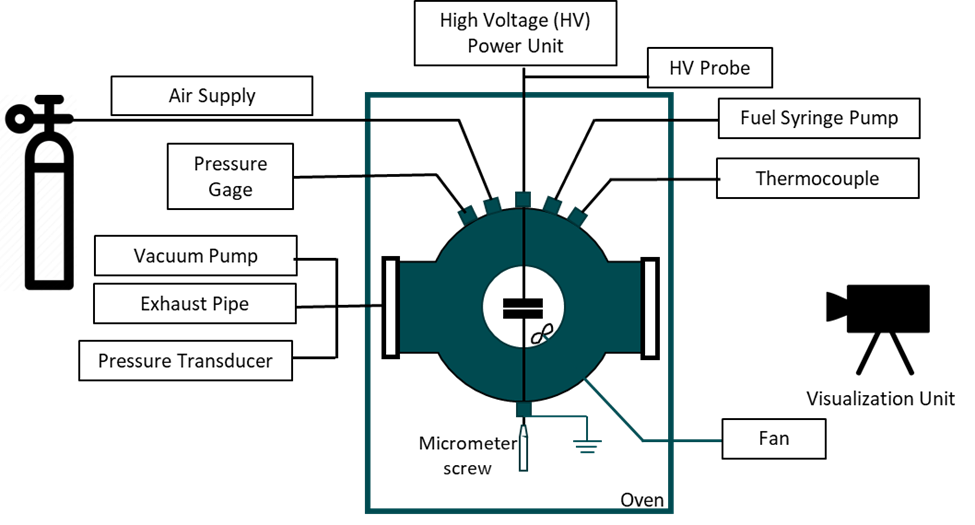Alternative Fuels
Combustion and Fire Safety of Alternative Aviation Fuels
Syngas produced from coal and biomass gasification can produce liquid fuels for aviation through fuel synthesis using processes such as the Fischer-Tropsch Process. As alternative fuels are emerging in the market, it is important to understant their physical, chemical and combustion properties. We developed a high-temperature spherical combustion bomb facility to study the combustion characteristics and gas-phase kinetics of alternative fuels. With this facility, we measured flame speeds of various fuels (including n-decane, methylcyclohexane (MCH), Jet-A, S-8 (a Fischer-Tropsch synthetic fuel), and synthetic gas at varying fuel-equivalence ratios, pressures, and temperatures. Under FAA’s goal of “1 billion gallons of sustainable drop-in jet fuel per year by 2018”, the purpose of this project was to understand the differences between jet-A and several alternative aviation fuels from the fire safety perspective, for example, concentration and temperature flammability limits, pool fire spread rate, and fire suppression characteristics. The results will help FAA determine the efficiency of currently utilized fire extinguishing agents at the airports and aircraft.
Quenching Distance of Fuels

Figure. A typical flame arrestor: 1.Exposed Side, 2.Protected Side, 3.Flame stabilized on arrester element, 4.Flame arrester element absorbs and quenches flame front, 5.Piping
Quenching distance is a fundamental property of hydrocarbon fuel-air mixtures and is a crucial parameter guiding process and equipment design for fire hazard mitigation. Many industrial equipment such as flame arrestors and burners rely on the fundamental principle of flame quenching, i.e., a flame cannot pass through confined spaces below a critical width, given by the Quenching Distance (QD) of the fuel-air mixture. Through the efforts spanning over more than a century, QD is found to depend on various parameters such as temperature, pressure, fuel-air equivalence ratio, and the characteristics of hydrocarbons comprising the fuel. We have developed an experimental rig that can measure the quenching distance of gaseous and liquid fuels, such as hydrogen, natural gas, gasoline, and Jet-A, at varous temperatures, pressures, and fuel-to-air equivalence ratios.



Flame propagated (phi = 1.05, gap distance = 2.2 mm):
Flame quenched (phi =1.05, gap distance = 2.1 mm):
